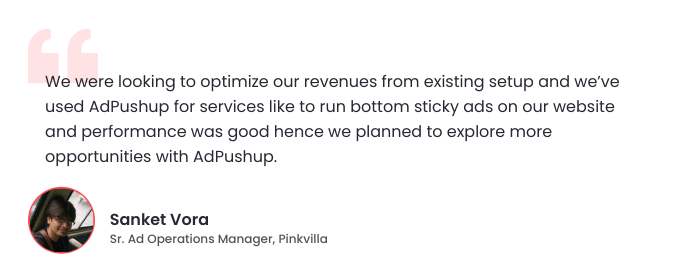For a long time, publishers had been oblivious of shadow blocklists and how they can temporarily terminate programmatic buying on your website.
Even now, it’s not a well-known term but shadow blocklisting can seriously impact publisher revenue.
Shadow blocklists were briefly highlighted in the industry when XDA developers, a 17-year old website targeting mobile software developers’ community, registered a 30 per cent drop in its ad revenues in October last year.
They couldn’t figure the problem out as the website was a serial leader in creating quality content.
Eventually, they understood that Google’s demand-side platform (DSP) DV360 had stopped buying. This probably happened due to the site-level policy violations that their ad management company had been receiving.
XDA had been, in all probability, put on what is referred to as a ‘shadow blocklist’.
What’s a Shadow Blocklist? How Do You Get Listed There?
Skirting around with demand-side rules is the top reason why publishers land in the shadow blocklist.
It’s a term that finds no mention in guidelines and isn’t literally a list. It is more of a condition where buyers simply stop bidding on a site.
Because this happens without prior information, the publishers have no clue of what went wrong and what needs to be corrected.
In the case of XDA, it took six months of trial and error to get back to normal. In many ways, it is akin to buyers ghosting publishers – distancing and disconnecting without ever telling them why. The impact is sudden and palpable if a DSP as big as Google’s DV360 stops buying.
Enough has been written about the XDA issue and how it went back to normal. But, notably, there isn’t a conclusive report on what actually went wrong.
So how do you avoid taking a hit on your ad revenues because of shadow blocklisting. We’ll get to it soon. If a site as popular as XDA with monthly visits of around 25 million isn’t immune to it, chances are no other publisher is.
How Can Publishers Avoid Shadow Blocklisting?
First things first, publishers need to remember that demand-side platforms will never inform them about what went wrong.
One reason for this could be the gap between publishers and DSPs. The other reason could be tech giants not willing to reveal how their algorithms work. It does not seem unfair either because publicly disclosing algorithms will make them vulnerable to bad actors.
As a publisher, you need to be sure that you aren’t indulging in practices that are in contravention of the policies laid out by the DSP. If you are found unfairly winning ad revenues, you run a real risk of being shadow blocklisted.
Additionally, always keep a tab on notices for violations concerning content that could be termed objectionable. If you have an agency handling ad management for you, make sure they are cognizant about it. Notices consistently not being acted upon by the publishers, can lead to DSPs taking action that may come off as a rude shock to your ad revenue stream.
Also Read: Policy Violations in Google Ad Manager: How to Prevent and Resolve
Violations in case of XDA were mostly on account of dead hyperlinks and user-generated content. As the site forums and news articles shared the same URL, content posted by users on forums exposed those pages to violations. Using separate URLs from the beginning would have helped them avoid the problem. Other publishers have an important lesson here on structuring their sites right to avoid such problems in the future.
How Can Publishers Avoid Getting Shadow Blocklisted?
There are a variety of things publishers can do, but the foremost that we recommend is partnering with an authentic ad tech partner. Publishers often make the choice based on their inventory requirements. That is absolutely the right approach but if an ad tech partner lacks immediate tech support and conversation is often one-sided, that is a massive red flag for any publisher.
Here are some additional tips that will help publishers in losing out on ad revenue due to shadow blocklisting:
- SEO Expert: Constantly keep track of any link-based changes on your website. Publishers can partner with any SEO expert who will alert them about dead, broken links. This will help them avoid any policy violations.
- Bot Traffic: Analyze the kind of traffic coming to your website. See if you have an influx of bot or invalid traffic. If you find anything unusual, fix it by blocking the unwanted traffic.
- Click Spam: Run a check to ensure your site does not have issues around click spam, or where users could accidentally click on an ad. Make necessary changes to the ad format and/or layout, as may be required. We encourage publishers to outsource this service for regular audits, hence getting the most out of the ads on your website.
- Mobile-first Environment: More and more people are actively using their cellphones to browse the internet owing to convenience and portability. If you aren’t optimizing your website for mobile, you are definitely missing out. Ensure that you have a fully responsive mobile site and are serving different ad sizes and formats on desktop and mobile.
- If nothing works, see how things look to the buyer on the affected DSP. For example, when XDA contacted a new ad management company to analyze what went wrong, they found out that DSPs couldn’t bid on 90% of their website inventory.

Final Thoughts
Sometimes, certain issues such as shadow blocklists can get easily ignored by publishers. There are so many different kinds of optimizations that publishers and their ad ops team handle. It is understandable that issues such as shadow blocklisting take a backseat.
But unfortunately, shadow blocklisting is like a tsunami. It hits without warning or notice, immediately, and wipes away all the other progress made. This is why, we recommend publishers to consistently focus on every little thing that matters, including the small fish in the sea which might not help them increase revenue but will help them prevent any revenue from being lost.

Shubham is a digital marketer with rich experience working in the advertisement technology industry. He has vast experience in the programmatic industry, driving business strategy and scaling functions including but not limited to growth and marketing, Operations, process optimization, and Sales.








